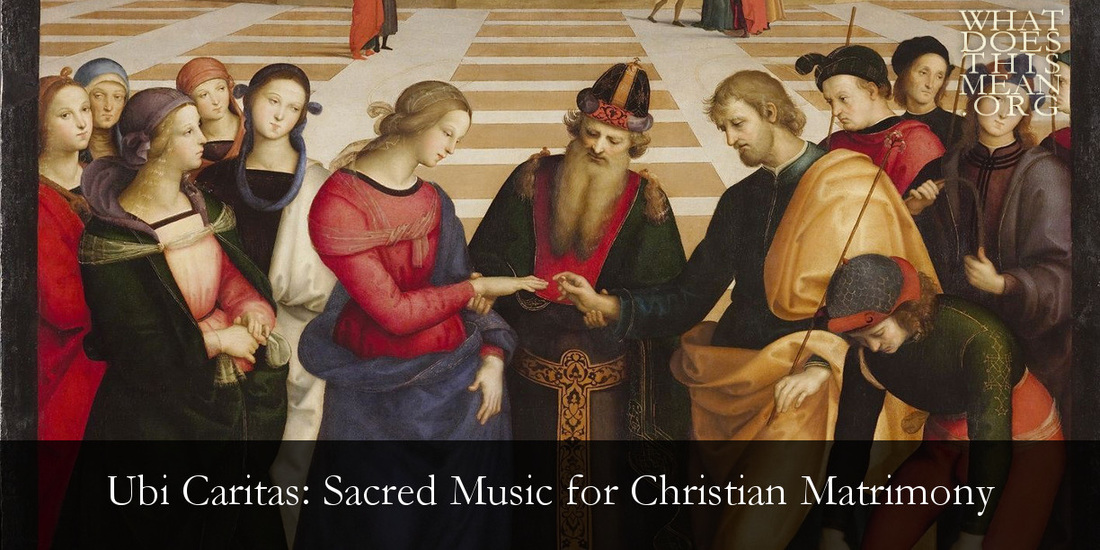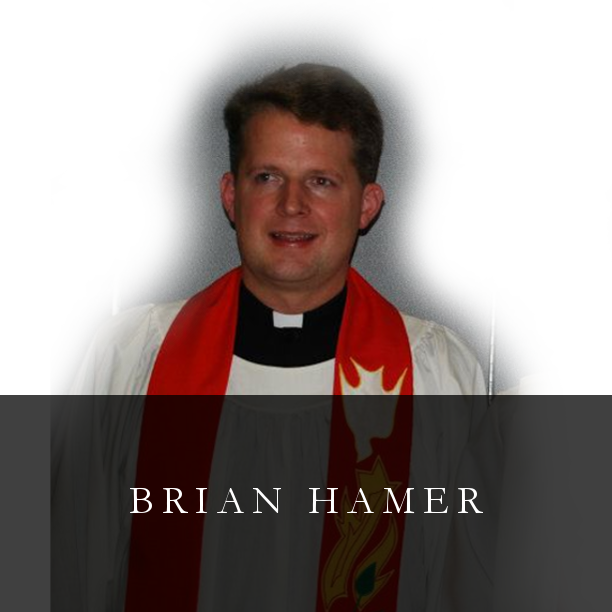theatrical performers, songs which lead to sensual love, but in the chants of the Church.
| Ubi caritas et amor, Deus ibi est. Congregavit nos in unum Christi amor. Exsultemus, et in ipso jucundemur. Timeamus, et amemus Deum vivum. Et ex corde diligamus nos sincero. Ubi caritas et amor, Deus ibi est. Simul ergo cum in unum congregamur: Ne nos mente dividamur, caveamus. Cessent iurgia maligna, cessent lites. Et in medio nostri sit Christus Deus. Ubi caritas et amor, Deus ibi est. Simul quoque cum beatis videamus, Glorianter vultum tuum, Christe Deus: Gaudium quod est immensum, atque probum, Saecula per infinita saeculorum. Amen. | Where charity and love are, God is there. Christ’s love has gathered us into one. Let us rejoice and be pleased in Him. Let us fear, and let us love the living God. And may we love each other with a sincere heart. Where charity and love are, God is there. As we are gathered into one body, Beware, lest we be divided in mind. Let evil impulses stop, let controversy cease, And may Christ our God be in our midst. Where charity and love are, God is there. And may we with the saints also, See Thy face in glory, O Christ our God: The joy that is immense and good, Unto the ages through infinite ages. Amen. |
The altos carry the melody at the beginning and the end of the work, with the sopranos doing the honors in the central portion of the work. The four-part vocal division in the men’s parts on the “amen” presents a formidable challenge, but the beautiful alto line on the “amen” is “worth the price of admission.” Dr. Nick Strimple, who literally wrote the book on choral music in the twentieth century, was certainly correct in his assessment of this timeless yet timely work:
| The popularity of ‘Ubi Caritas’ from Four Motets on Gregorian Themes is such that many choral conductors remain blissfully unaware that any other settings of that text even exist. This popularity may be justified, too, since Duruflé’s succinct setting is a virtually perfect reflection of the text. |
Readers of “Lifted Voice” are probably familiar with the West Coast composer, Morten Lauridsen (b. 1943), who holds the honors of being the most frequently performed American composer. Many of his later works are profoundly inspired by Gregorian chant, including his setting of all three stanzas of Ubi Caritas (1999), which is a good case study in the marriage between tune and text. In the following video, the men sing the plain chant as an antiphon. Try to see how the chant is woven throughout the work, accompanied by “the undulating and glistening textures for which Lauridsen’s music is justly famous” (Strimple, Choral Music, p. 247). This is by far the longest (explained by Lauridsen setting all three stanzas) and the most challenging of the three settings highlighted in this column, but it is also very rewarding to learn, sing, and, as you are about to discover, to hear:
A third option is from the Norwegian-born pianist and composer, Ola Gjeilo (b. 1978), who currently lives and composes in Manhattan. Perhaps inspired by Duruflé, Gjeilo set just the first stanza of the sequence, with special emphasis on the words, “Love of Christ” (Christi amor). The most unique feature of this setting is the somewhat daring use of f-sharp minor, which required some alteration of the original chant. Notice, however, that the minor key, along with Gjeilo’s unique harmonic and melodic language, seems to convey the mystery of the union of husband and wife in Christ.
As mentioned at the beginning of this column, most weddings usually employ a soloist to sing anything from the Lord’s Prayer (a curious practice, by the way, since the soloist does not play a high priestly role for the assembly) to popular music that has no place in God’s house. The challenge of the choral music listed here is to find, train, and prepare a choir for the wedding, and yet, that is precisely the point. Instead of hiring a soloist for weddings, why not renew the concept of being a “wedding singer” and have a small group of trained vocalists who serve as the core singers for weddings? These forces could be augmented by other good singers, operating under the theological presupposition that the wedding is a public rite of the church and the entire community, while not necessarily invited to the wedding reception, is most certainly invited to the wedding. I have personally been involved in this sort of preparation as a singer, conductor, and pastor, and I have found that it is rewarding for everyone who is involved.
Finally, it is worth noting that the wedding service, along with the funeral service, is one of the most public statements of the congregation’s theology and practice to the local community. The next time you attend a wedding or a funeral in your church, notice how many people in the pew are visitors. In most cases, despite the best efforts of evangelism committees, these visitors will never return to your church. But the message that they hear, both from the pulpit and the choir loft, is vital nonetheless, especially if they are unchurched. Ubi Caritas should not be overlooked as the church prays for bride and groom “to live in faith toward [God], in the communion of [His] holy Church, and in loving service to each other that they may ever enjoy [His] heavenly blessings” (Lutheran Service Book: Agenda, p. 81).



 RSS Feed
RSS Feed
